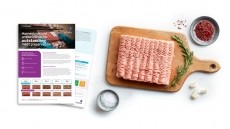Global food preservatives market to grow at CAGR of 2.5% in next five years

By the end of 2016, it will be worth more than $2.55bn in 2016, with growth boosted by strong demand for natural preservatives in developed markets and continued demand for processed foods in emerging markets, claims the market researcher.
"The CAGR in Europe is mainly driven by the fast growth in the natural preservatives segment with the fastest growth in Germany, France, the UK and Italy.
“The trend of natural preservatives has originated from the appeal of European nations to market the clean label food products free of additives, especially synthetic variants. And, hence, the changing lifestyle and the booming food and beverage industry have given a boost to the demand for natural preservatives.”
However, it notes that novel processing technologies such as high pressure processing and pulsed light are in some cases doing away with the need for preservatives altogether.
As of 2011, the largest market for preservatives was North America ($878.5m), followed by Asia Pacific (716.7m), Europe ($393m) and the rest of the world ($352.2m).
Natural preservatives
Speaking to FoodNavigator-USA last year, Danisco global business director for bioprotection Nathalie Brosse said growing pressure on manufacturers to oust synthetic anti-oxidants and anti-microbials from labels was driving rapid growth in natural preservatives in the US.
While some beverages and meat products still presented a challenge to firms looking to avoid synthetic preservatives, natural alternatives were increasingly matching synthetics in terms of efficiency and cost in use, claimed Brosse.
“We’re seeing double-digit growth here and all the evidence suggests we can sustain that for the immediate future. Surveys show something like 70% of consumers in the US people want products with natural preservatives and all of our customers are looking for natural products where possible. It has really become the mainstream now.”
But manufacturers were not just buying natural anti-microbials to ‘clean up’ labels, she added. “Some natural mold inhibitors such as Natamax deliver a much cleaner, fresher flavor and a longer shelf-life in products such as bread and tortillas than foods using sorbate for example. You can really smell sorbate in pan bread.”
As for cost, natural protective solutions were generally more expensive per kilo, but could prove surprisingly cost competitive on a cost-in-use basis because they could often be used at very low dosages, she claimed.
What’s new?
R&D teams at Danisco were investing a lot of money into screening new fermentates, fruit extracts, plant extracts and essential oils to assess their efficacy as anti-microbials or anti-oxidants, she added.
“Marine based anti-microbial ingredients are also looking very promising, but we’re only at the preliminary stages of research in this area.”
Brett Thompson, global product manager at Danisco, told FoodNavigator-USA in September that its new natural preservative BioVia YM 10 (a blend of cultured dextrose and plant extracts) was just as effective at tackling hard-to-control spoilage yeasts as potassium sorbate.
He added: “Food manufacturers are well aware of consumer demand for more natural products with friendlier labels, but many have hesitated to choose a natural food protection solution because they wanted every bit of the effectiveness they could get from traditional chemical alternatives.
“We think BioVia will change that. It simply takes that objection to natural solutions off the table."





























